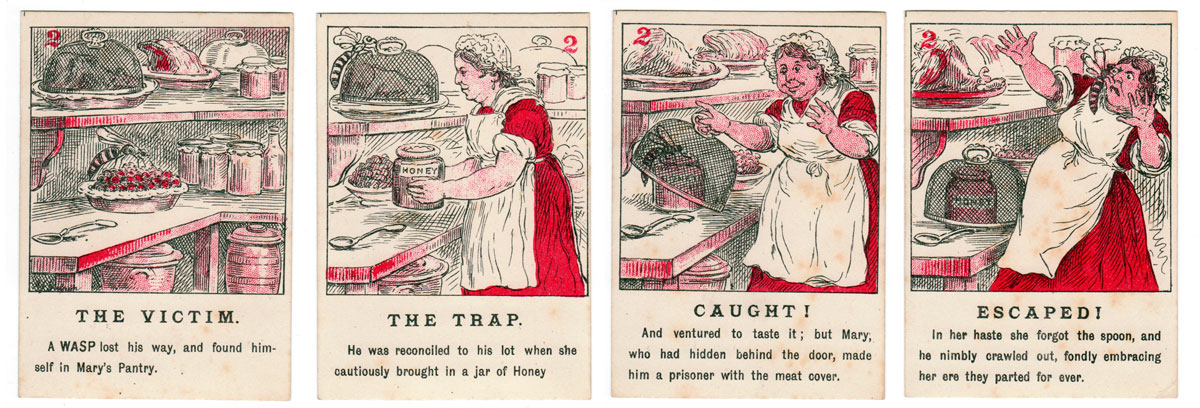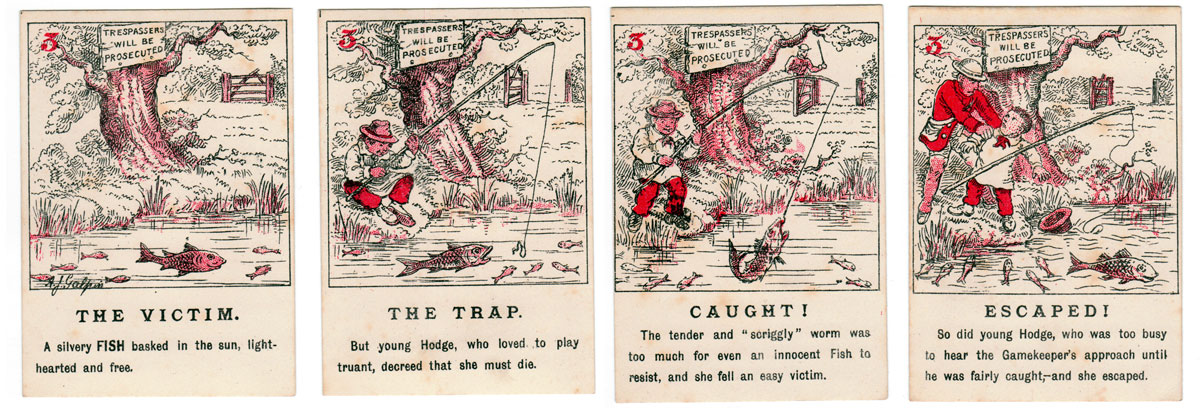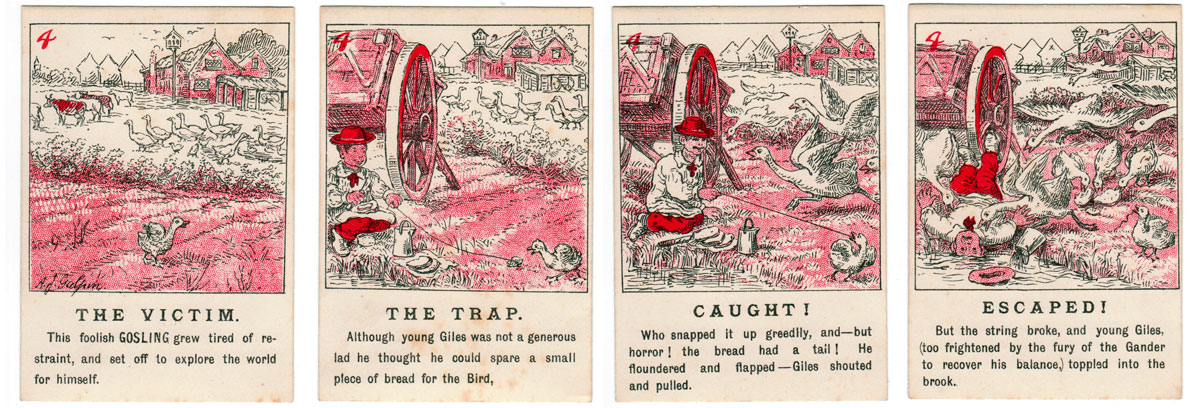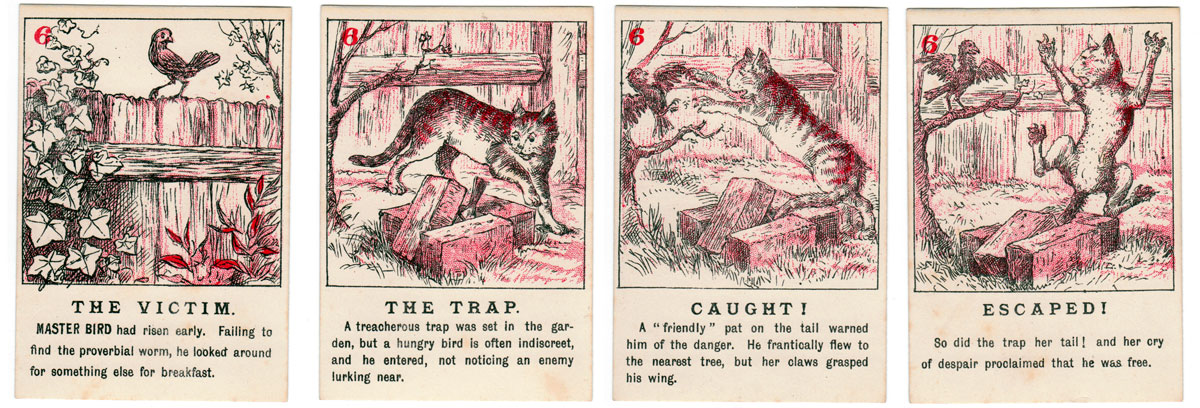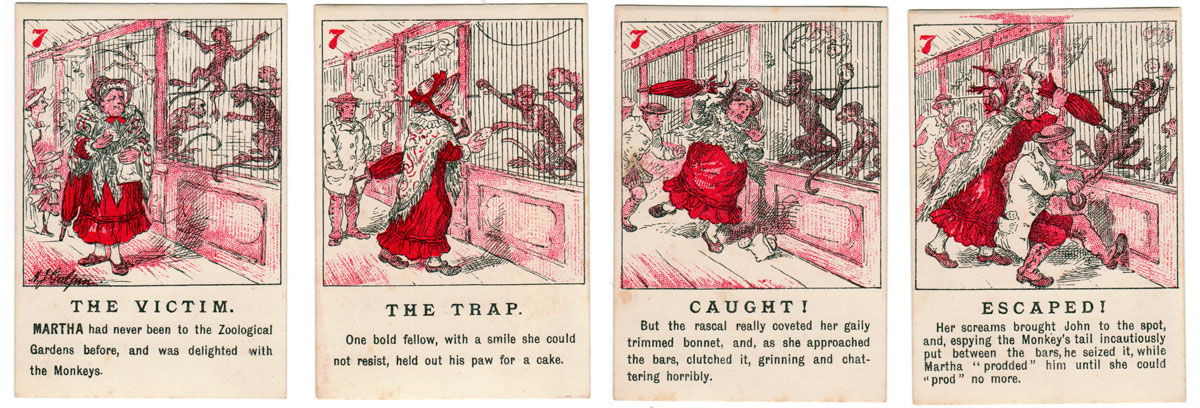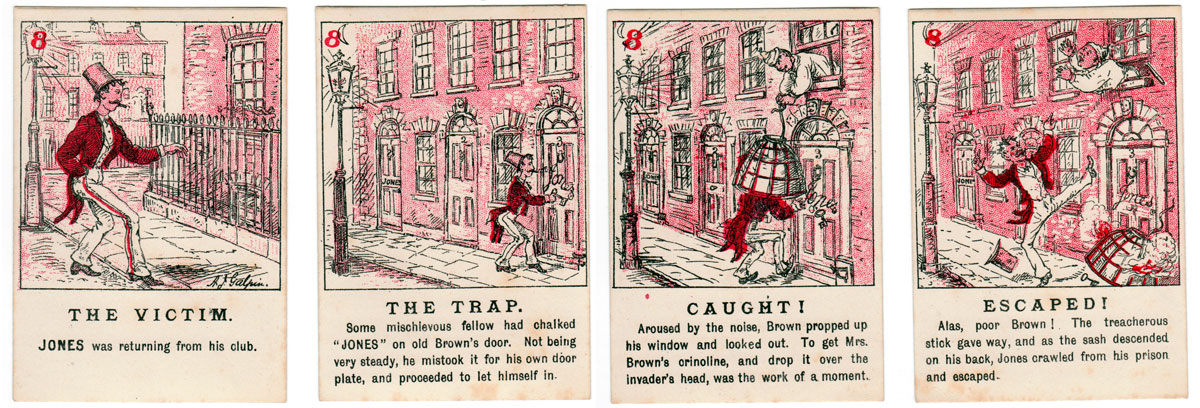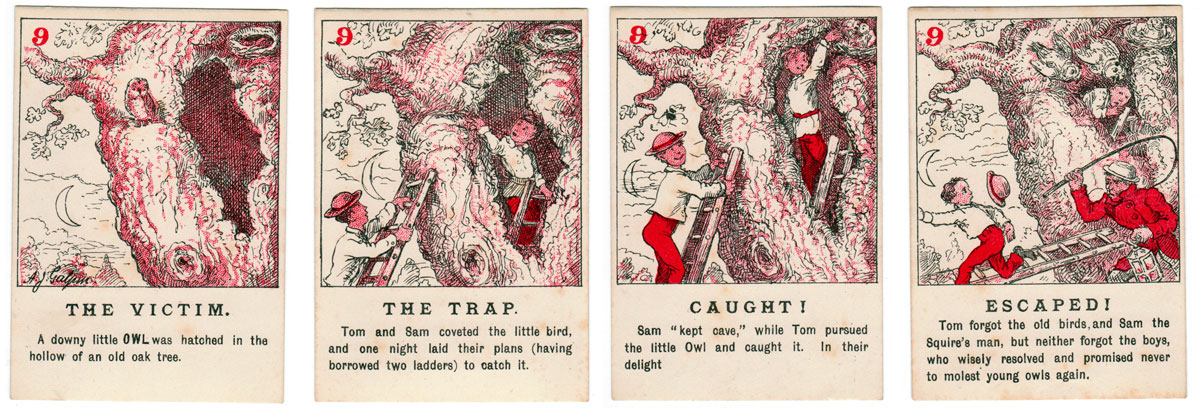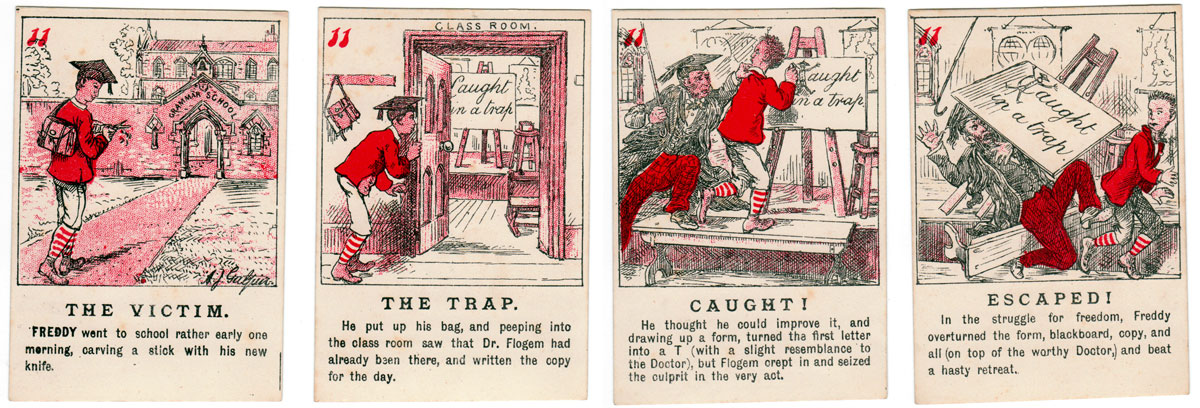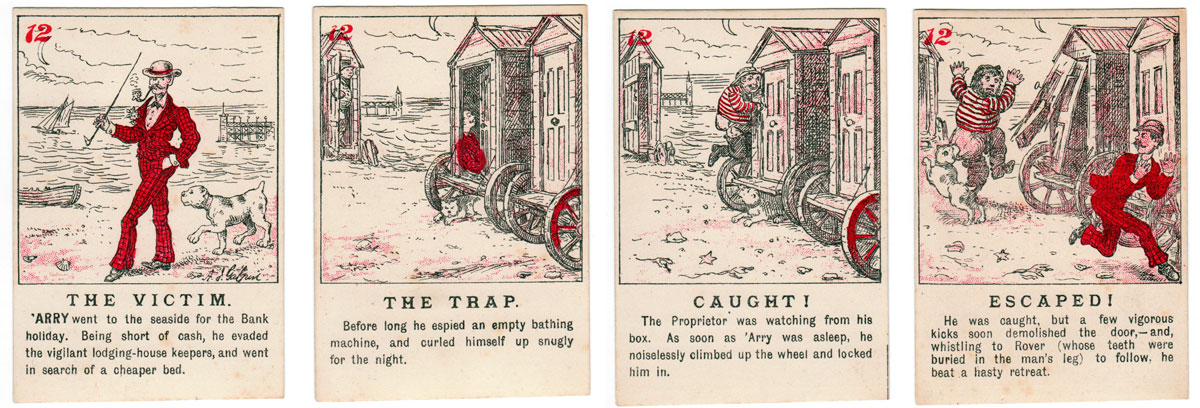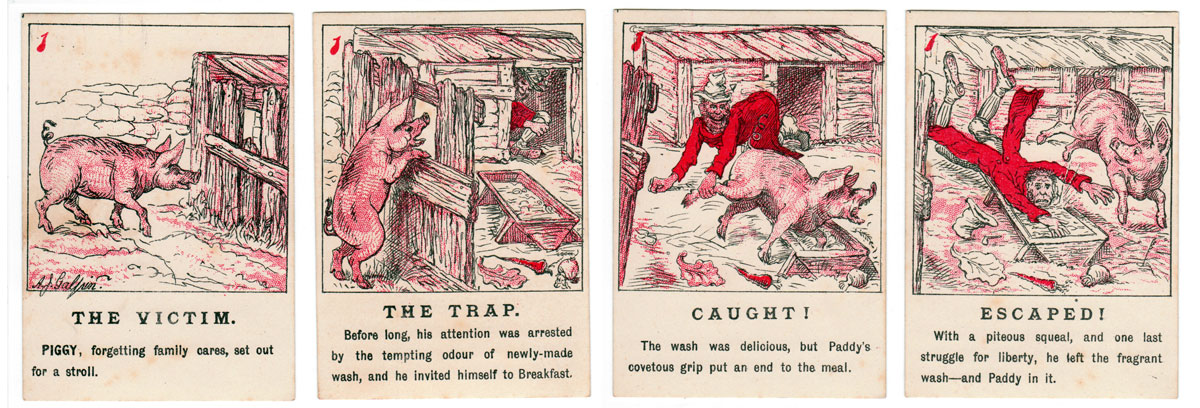Caught in a Trap
A Victorian card game telling a story of a victim being ensnared in a trap, being caught, and finally escaping.
Caught in a Trap, c.1880
Published by A. J. Galpin & Co., Market Place, Norwich, c.1880-1900.
A Victorian card game consisting of 12 sets of 4 cards, each set telling a story of a victim being ensnared in a trap, being caught, and finally escaping.
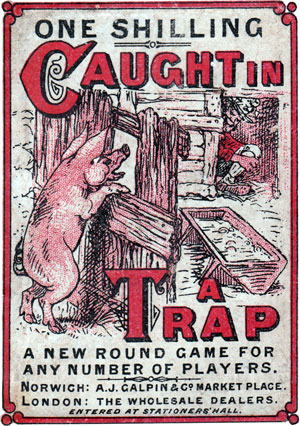
Credits: all images and notes courtesy Rex Pitts.
I took a little trip down to the Norwich Reference Library to see what I could find out about these cards. We had a disastrous fire at our City Centre Library in 1994, so our reference section, as well as the lending section, has been decimated. A new library has been built in the new Forum, but it will not replace the books we lost. There was a postal directory for Norwich still available for 1897, but A J Galpin was not listed. However they did appear in the 1900 Kelly’s Guide at No 18 The Walk, Market Place as a Fancy Repository. They were also listed under Toy Dealers, but not under Printers. From this I concluded that they must have had the cards printed for them as they did not seem to be printers themselves. From an incomplete set of Kelly’s Guide, I was able to determine that in 1904 there was no Galpin in Market Street and this must mean that the cards were produced between 1880 and 1903. Around 1910 they moved into the beautiful Art Nouveau Royal Arcade built in 1899 in Norwich as they are entered as such in the 1912 Kelly’s. The proprietor was a Miss G Galpin.
At this point I thought I had got all the information I was going to get, but I had an idea. Galpin is an unusual name so I looked it up in the local telephone directory and found a couple of entries. As luck would have it the first number I rang turned out to be the one I was hoping for. Mr Galpin told me that Miss G Galpin was his aunt and that her father, A J Galpin, had come to Norwich from Dorset in the late 19th century and set up business here. The business had passed on to his daughter but she had sold up during the First World War to go and become a nurse. The business had been bought by Langleys who have subsequently become a very substantial toy retailer. In fact, having traced and spoken to the ex-manager (1960 – 1985) he tells me that they were the second largest toyshop in Britain in 1975 after Hamleys in London.
The companies mentioned on the cards namely John Cook on set 5 is listed in 1879 as a victualler and measure maker and Jewsons also on set 5 is listed as a coal merchant and importer of deals and timber. Jewsons have more recently become known as having “the Jewson lot” when it comes to building supplies, according to the TV advertisements.
By Rex Pitts (1940-2021)
United Kingdom • Member since January 30, 2009
Rex's main interest was in card games, because, he said, they were cheap and easy to get hold of in his early days of collecting. He is well known for his extensive knowledge of Pepys games and his book is on the bookshelves of many.
His other interest was non-standard playing cards. He also had collections of sheet music, music CDs, models of London buses, London Transport timetables and maps and other objects that intrigued him.
Rex had a chequered career at school. He was expelled twice, on one occasion for smoking! Despite this he trained as a radio engineer and worked for the BBC in the World Service.
Later he moved into sales and worked for a firm that made all kinds of packaging, a job he enjoyed until his retirement. He became an expert on boxes and would always investigate those that held his cards. He could always recognize a box made for Pepys, which were the same as those of Alf Cooke’s Universal Playing Card Company, who printed the card games. This interest changed into an ability to make and mend boxes, which he did with great dexterity. He loved this kind of handicraft work.
His dexterity of hand and eye soon led to his making card games of his own design. He spent hours and hours carefully cutting them out and colouring them by hand.

Related Articles
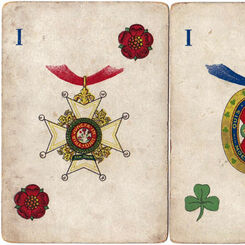
Union Jack
Union Jack card game published by C.W. Faulkner & Co., c.1897-1902.

Valentine’s Games
Valentine & Sons Ltd, Dundee & London, were greeting card and book publishers who also produced play...
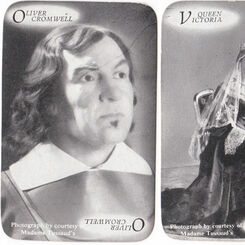
Have A Go
Have A Go card game published by Photo-Briton Ltd featuring photographs of waxwork figures from Mada...
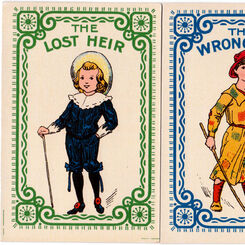
The Lost Heir
“The Lost Heir” was first issued by J. W. Spear and Sons in UK in 1912.

Fee-Fi-Fo-Fum
Fee-Fi-Fo-Fum published by C.W. Faulkner & Co Ltd, c.1925.
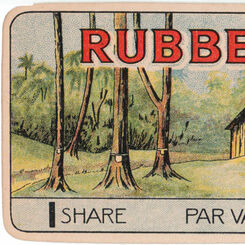
On Spec
“On Spec” is a round game based on selling stocks and shares, published by John Jaques & Son, c.1920...
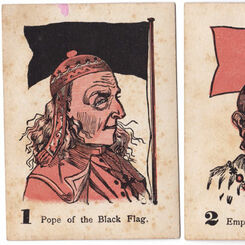
Four Flags
The Game of Four Flags published by Multum in Parvo, 1884
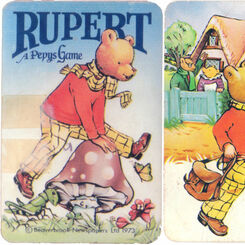
Rupert
Rupert, a Pepys Game, 1973.
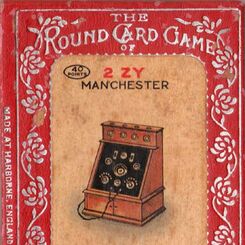
Sparx
‘Sparx’ card game, or ‘Listening In’, published by Chad Valley Games, c.1925.

Anonymous Snap game
Anonymous “Snap” game from the late 19th century.
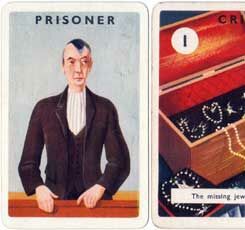
Alibi
“Alibi” the thrilling card game by Haytor, Tor Productions, 1930s.
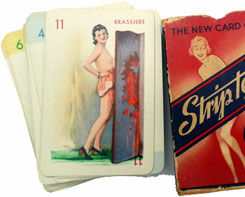
Strip Tease
‘Strip Tease’ card game featuring characters involved in the performance and subsequent prosecution ...
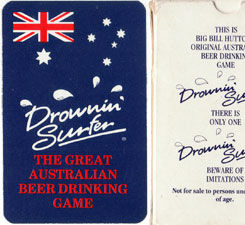
Drownin’ Surfer
Drownin’ Surfer card game
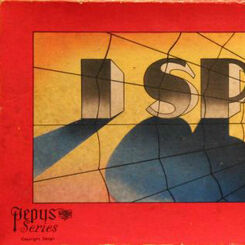
Board Games by Pepys
Pepys board games which may be interesting to see.

Legs Eleven
Legs Eleven card game by Pepys, 1974.

St George Game
St George Game, 1858, depicting St George and other saints engaged in battle slaying the dragon to s...
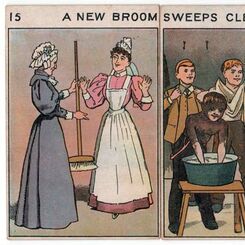
Picture Proverbs
Picture Proverbs was a Victorian card game illustrating popular proverbs which were seen as words of...
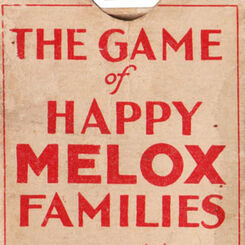
Happy Melox Families
The “Game of Happy Melox Families” was published by G. Clarke & Son of Thomas Street, London, in 192...

Waddy Productions
Waddy Productions Ltd was a member of the giant Amalgamated Press group and only published card game...

Dartex
Dartex, the Thrilling New Card Game of Skill (1938) based on the traditional pub game where darts ar...
Most Popular
Our top articles from the past 60 days


